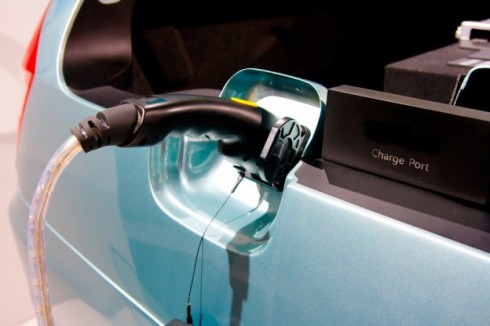Dual-Points System for AEV in China starting April 2018
Publish time:10/19/2017 12:00:00 AM Source: CCM
Information collection and data processing: CCM For more information, please contact us
As part of the efforts by China to become the leading global market for alternative energy vehicles (AEV), the country has introduced the policy for car manufacturers in the country regarding the limit of AEVs they have to sell.

The Ministry of Industry and Information Technology of China (MIIT), the organization behind the so-called dual points system, has announced that it comes into effect in April 2018. The system aims to lead car manufacturers towards a higher R&D and promotion of alternative energy vehicles while giving them, time to prepare accordingly for the changes. According to the policy, all the domestic vehicle manufacturers and importers with annual sales above 30,000 are subject to the rules of Fuel Consumption Point and AEV Point.
What are dual-points systems
The dual-points system is the concept of the MIIT in China to promote and develop the AEV industry. It is basically based on the idea, that manufacturers have a percentage, or point requirement, to have a minimum share of AEVs in their whole vehicle portfolio. According to the draft of the MIIT, the required share of clean vehicles is 8% for 2019, 10% for 2020 and 12% for 2021.
After some complaints from the automobile industry about unreasonable high past of the AEV requirements in the draft before, changes under discussion saw a target of AEVs making up 8 percent of sales in 2018 originally was pushed to 2019. Automakers and industry bodies have said the targets are too tough and could hurt manufacturers' interests. New energy vehicles in 2016 accounted for just 1.8 percent of sales in the world's biggest autos market.
The scheme is required for every vehicle manufacturers, which are producing more than 30,000 vehicles every year. The system is called dual-points because manufacturers gather points for traditional fuel-running cars and AEVs. They have to gather the required points for AEVs in order to fit the rules. If Manufacturers are not able to produce sufficient AEVs in 2019, then they have the chance to produce more than the minimum share of AEVs in 2020 to balance out the negative value of 2019. Furthermore, enterprises can purchase AEV points additionally to achieve the requirements.
Effect on manufacturers
According to market intelligence firm CCM, the AEV Point rule will bring great pressure to many manufacturers. Nevertheless, some with self-owned brands can benefit from the rule by participating across the AEV industry in advance.
Most of the enterprises still have a long way to go. Currently, many joint ventures in China still focus solely on fuel vehicles and haven't launched any AEVs yet, including SAIC Volkswagen Automotive, FAW-Volkswagen Automotive, and Changan Ford Automobile Co.
All and all, the sales volume of AEVs is much smaller than that of fuel vehicles. Of all car companies with self-owned brands, some enjoy dividend period by participating across the AEV industry in advance of the implementation of the dual-bonus point policy, including BYD, Beijing Electric Vehicle, Geely Automobile, Zotye, Ltd. and Hefei Jianghuai Automotive.
Not only traditional vehicle enterprises but also battery electric vehicle producers are encouraged to enter the AEV market; that is to say, a batch of new battery electric vehicles will be put on sale in the next 2–3 years. According to the dual bonus point policy, these companies can make revenue from the sale of BEVs and trade their points on the AEV Point Platform.
China’s AEV market
China is leading the worldwide electric energy vehicle market for some years now. In 2016, China has registered about 352 thousand new electric vehicles. The USA in comparison has only registered 159 thousand cars, which are even highly concentrated in the Californian market. In fact, China has already surpassed the USA in the number of new registrations in the year 2014, and the gap is rising since then.
Even China is highly promoting the production and sales of AEVs in the countries polluted big cities, the subsidies for AEVs are continuously declining and are going to continue to do so in the future until they will be abolished completely after the year 2020. The value of local subsidies furthermore shell not exceed 50% of the central government subsidies for AEVs.
According to market intelligence firm CCM, China’s AEV market is continuing booming, showing the largest number of new registered electrical vehicles with a number of 352,000 in 2016 alone. After all, China wants to achieve a share of not less than 11% for sold cars shall be alternative energy vehicles by 2020. In total numbers, this will be about 2 million units of cars by the end of the decade, from a sale of 507,000 units in 2016.
About CCM
CCM is the leading market intelligence provider for China’s agriculture, chemicals, food & ingredients and life science markets.
Do you want to find out more about the AEV market in China? Try our Newsletters or join our professional online platform today and get insights in Reports, Newsletter, and Market Data at one place.
For more trade information of batteries, including Import and Export analysis as well as Manufacturer to Buyer Tracking, contact our experts in trade analysis to get your answers today.